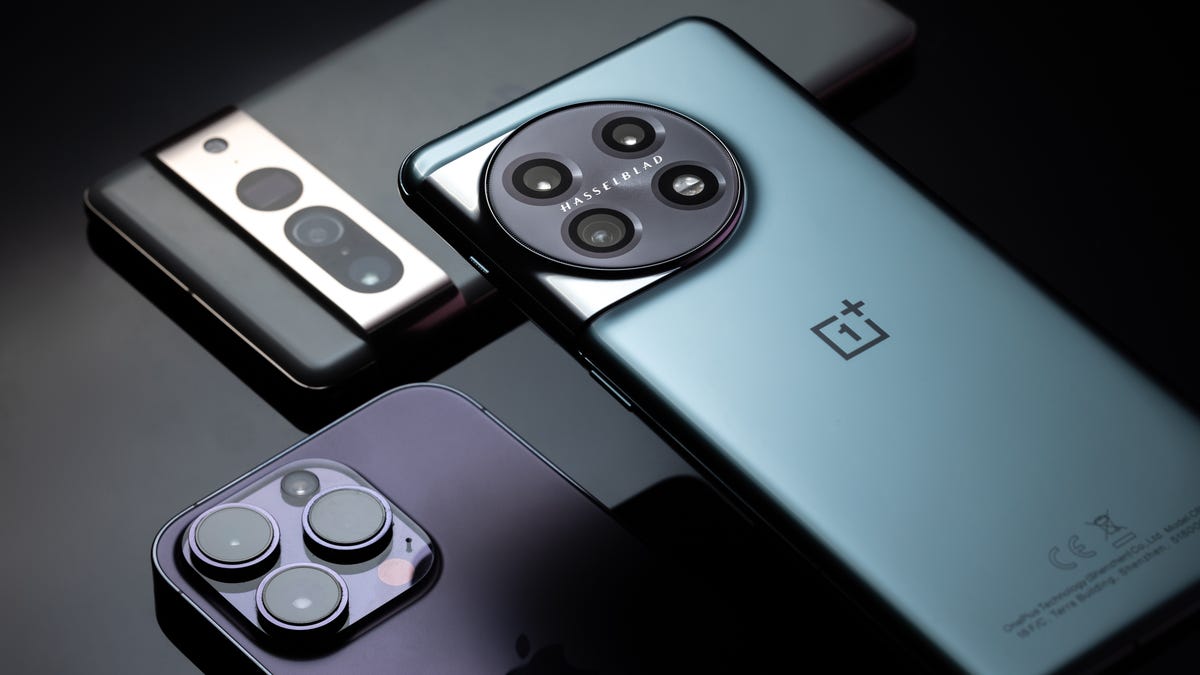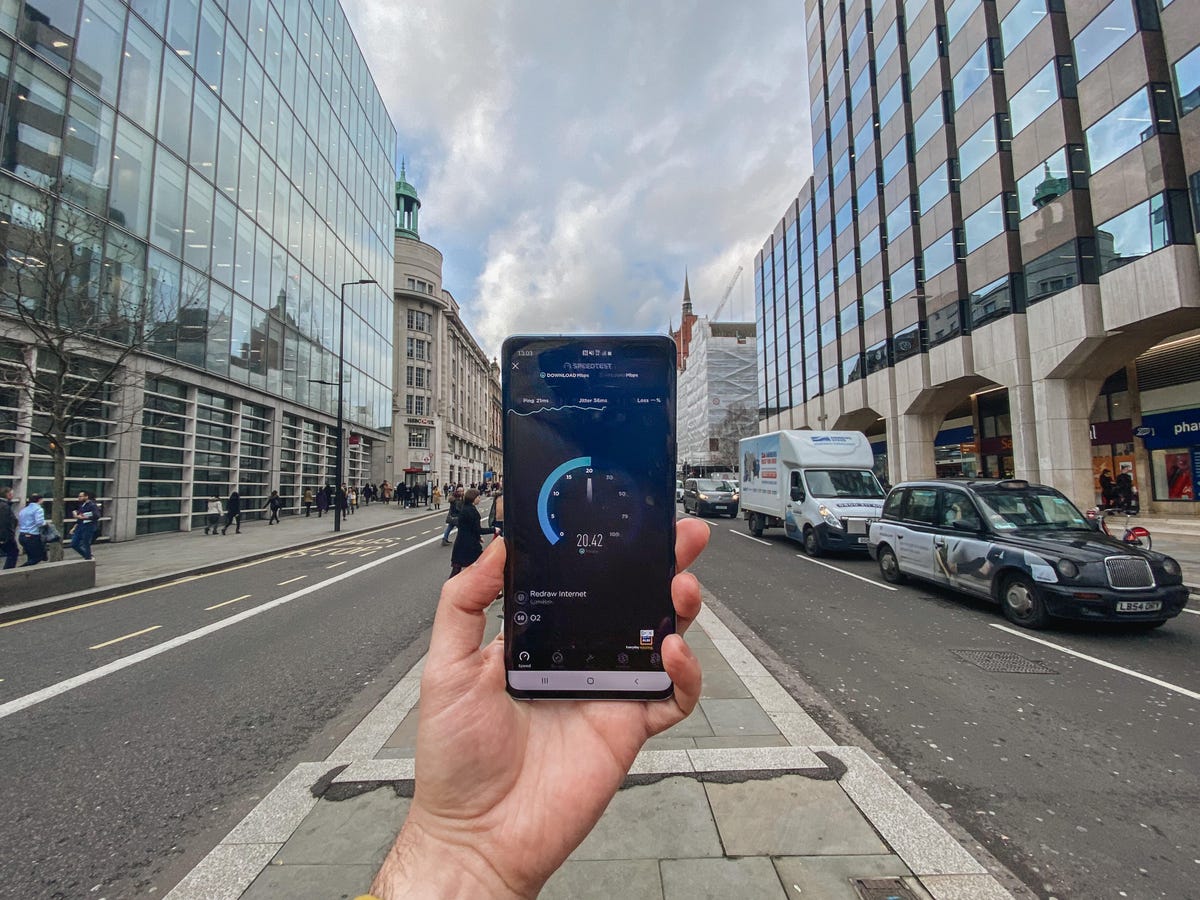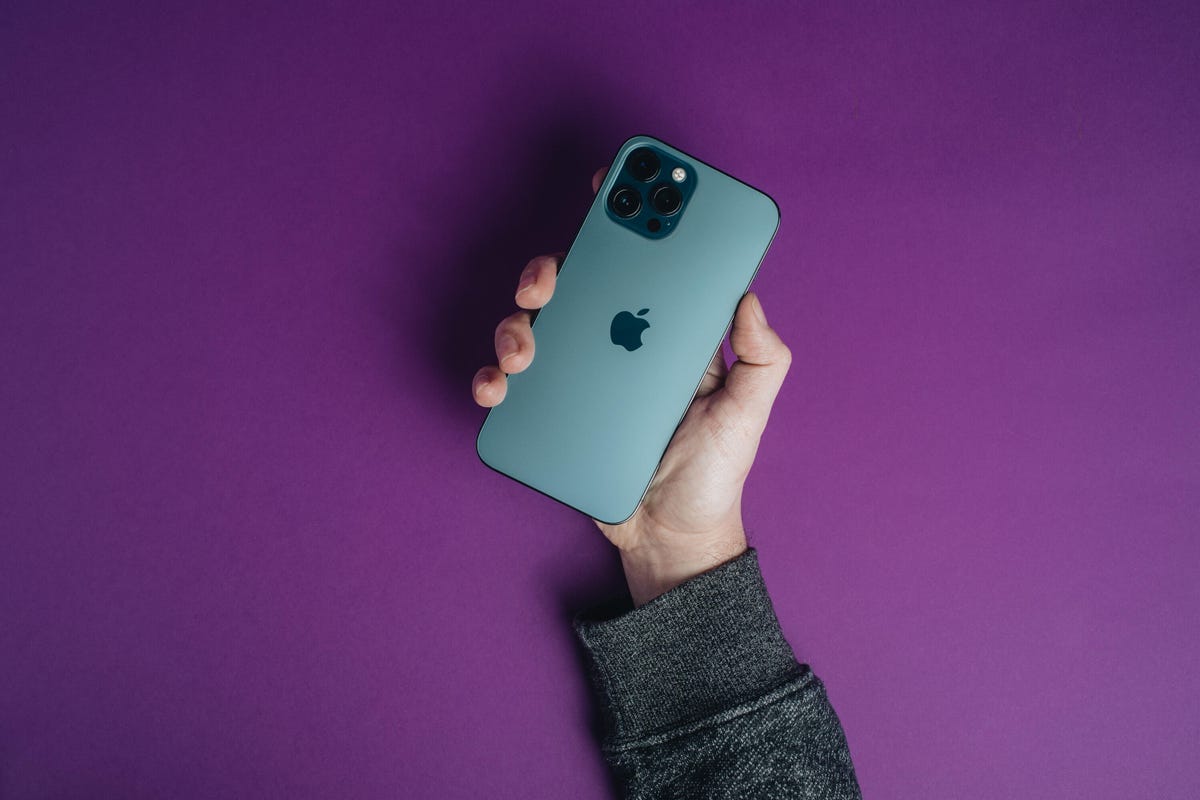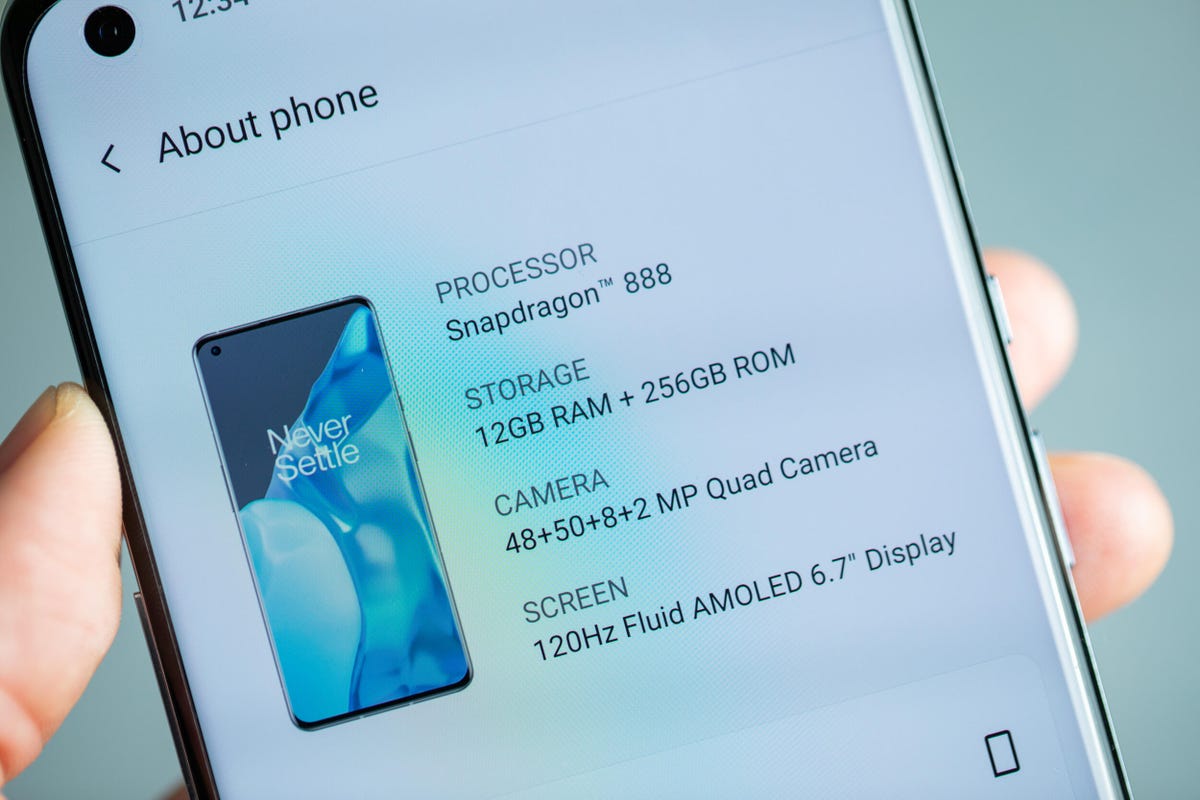Technologies
Buying a New iPhone or Android Phone? Consider These Things First
With so many choices, it’s difficult to pick the best phone for your budget. We’re here to help.

The best phones you can buy in 2023, like the iPhone 14 Pro, the Google Pixel 7 Pro and Samsung’s Galaxy S23 Ultra, offer all the features you could possibly want. With their stellar performance, amazing camera systems and extra features, these top phones represent the pinnacle of mobile technology. So it’s unsurprising these premium phones come with sky-high prices to match. The huge costs of these devices mean they’re out of reach for many of us, or are simply unnecessary if you just need a solid device for your everyday essentials.
Read more: Best Android phone to buy in 2023
The huge number of choices from a variety of phone manufacturers should make shopping simple, but sometimes this makes it more confusing, whether you’re looking for the highest-quality, elite phone or a more affordable phone, like the Google Pixel 6A. The best devices on the market not only have different prices, they also have different camera specs, screen sizes and storage capacities.
In this article
- Top phone-buying tips
- Performance vs. budget
- 4G or 5G?
- Camera performance
- Processor performance
- How much storage do you need?
To help you cut through some of the jargon and spend your money sensibly, I’ve put together my tips for buying a phone.
How to buy a new phone: Top phone-buying tips
- Know what you care about most: Is it screen size? Camera quality? Battery life? This will help narrow down your choices. Phones like the iPhone 14 Pro or Pixel 7 Pro, for example, pack incredible cameras that almost rival the quality you’d get from a DSLR. If you’re a photographer, then spending money here is a good idea. If not, you can likely save yourself a bundle.
- Don’t discount the midrange: Features of last year’s flagships always trickle down to this year’s midrange handsets. You can get a great phone that does almost everything that a premium phone can do for a fraction of the price. Google’s Pixel 7 Pro packs a great zoom camera, but the base Pixel 7 has most of the same key specs and comes at a more reasonable price.
- Shop the sales: Look for deep discounts and promo deals around major holidays, especially Amazon’s Prime Day and Black Friday. And find out what your grace period is in case you need a quick return or exchange.
- Last year’s phones: They can often be a great deal, too. Wait for this year’s launch to get last year’s phone for less, when stores and carriers may be trying to offload their existing stock.
- Hold the phone at a store first: You may love or hate the way it looks and feels in person.
- Check if you’re already invested: Have you already bought a lot of iPhone apps and iTunes movies? Stick with an iPhone if you still want access to them. Likewise, if you’ve invested in loads of Android apps, you’ll want to stay on that side of the fence. Otherwise, it’s simple enough to switch platforms.
- Buy a case and screen protector: You’ll protect your phone from costly damage, and will increase the phone’s resale or trade-in value for when you’re ready to move on.


Smartphone performance vs. budget
In general, performance lines up with cost. The very latest, greatest technology usually comes at a premium. Flagship phones pack the best cameras, the most powerful processors and may even sport cutting-edge tech like flexible displays. The high prices mean that these phones are only worth considering for those who want the absolute latest tech in their pockets.
Not everyone needs such top tech however, or may simply be unwilling to spend the $1,000 or more typically required to get it. Luckily, the midrange sector of the phone world has been one of the fiercest battlegrounds for companies to compete in, resulting in some amazing phones that won’t break the bank. Features like wireless charging and cameras with multiple lenses that were once the domain of flagships are now commonplace on midrange phones.
Even budget phones will still offer decent camera quality and enough power for you to enjoy all of your everyday web browsing, WhatsApp’ing and Instagramming.
4G or 5G?
5G is the latest standard that promises lightning-fast mobile data speeds when you’re out and about. Like any new technology, it’s commonplace to see it on higher-end devices but it’s also increasingly common to find on much more affordable phones too.
Coverage for 5G isn’t everywhere yet, so it’s important to ask yourself whether you need 5G speeds at all and crucially, whether they’re available where you live. If you’re planning on keeping your phone for at least a couple of years, you can safely expect 5G to become more of the norm in that time. If you’re on the fence about it now, it may be that in nine months you’ll feel differently and might regret not taking the plunge sooner.


Screen size
All phones have gotten steadily bigger over the last few years, with the iPhone 14 Pro Max measuring a whopping 6.68 inches and the Galaxy S23 Ultra coming in at 6.8 inches. Small phones aren’t that common anymore but there are a few options to consider if you don’t want a massive screen stretching out your pockets.
Apple opted not to update the iPhone 13 Mini this year, but it is still officially on sale through the Apple Store and at 5.4-inches it’s quite a lot smaller than the 6.1-inch iPhone 14. On the Android side, the Google Pixel 6A’s 6.1-inch display makes it one of the better smaller phones, but even then it’s hardly what you’d call tiny.


Camera performance
Camera features have been a major point for bragging rights in recent phones, with manufacturers always wanting a bigger, more exciting number, be it the number of megapixels or quantity of actual camera lenses. Three rear cameras are now common — a regular lens, an ultrawide lens and a telephoto lens — with even budget-focused phones packing multiple cameras.
Read more: Best camera phones to buy in 2023
This is great, as more lenses mean more shooting options when you’re out and about. But that doesn’t mean that any multilens camera is as good as another. As with processor performance, the more you spend, the better the results you’ll typically get, with the absolute best cameras around usually being found on the most expensive flagships.


Look out for features like optical (rather than digital) zooms, night mode for better low-light images, and optical image stabilization. Sometimes these features might not be clear, and it’s not possible to judge a camera’s performance just by looking at the specs. If you really care about your phone’s photography skills, then take some time to look at the reviews and see how its camera performs before you spend your money.
Battery life
Most phones, from the budget end through to elite flagships, can last most of a day on a single charge. Bigger phones might have bigger batteries, but they also have bigger screens and often more powerful processors, so they suck that extra juice down quickly. Few phones will give you more than a day of use. Here are some things to keep in mind:
- Always plan on giving your phone a full charge overnight.
- Look for features like fast charging, that allow your phone to take on a lot of power in a short space of time. Check to see if your phone comes with a compatible faster charger though, as an old USB plug may not support it.
- Your battery will last longer if you avoid more demanding tasks such as gaming or video streaming. Keeping the screen brightness down will help, too.


Processor performance
Top-end phones pack powerful processors along with 12GB of RAM or even more. It’s enough to make these phones run any task without breaking a sweat, but you don’t need to spend flagship level money to get great performance.
Most decent midrange phones offer enough power to handle all of your everyday needs. You’ll still be able to play almost any game from the Google Play store and edit your high-resolution photos in apps such as Snapseed. There’s little you could throw at most midrange phones that they wouldn’t be able to handle.
As you move into the budget end of the spectrum, that’s when you’ll start to notice some slowdown with things like gaming. More demanding 3D games might look more stuttery and may even unexpectedly quit. However, basic tasks such as sending emails, listening to Spotify and browsing Instagram shouldn’t be a problem.
How much phone storage do you need?
Most phones, even the budget ones, come with at least 32GB of storage, of which 10 may be taken up by preinstalled apps and the phone’s operating system. If you don’t ever plan on recording any video and gaming isn’t your thing, 32GB might be enough, but otherwise you should consider 64GB or even 128GB to be a minimum.


Higher-end phones — particularly those that can record high quality 4K video — offer capacities of 256GB or more. With that much space, you’ll barely need to think twice about having to clear out old files.
If the phone supports microSD cards then it’s a different matter, as you can pick up 32GB microSD cards (or bigger) for very little money these days and popping one into your phone will dramatically increase the amount of storage you’ll have access to. Unfortunately expandable storage is a very rare feature on phones these days.
Bonus features
Many of these features are now common on phones at various price points and are worth keeping in mind when you’re shopping.
- Fingerprint scanner or face unlock: A scanner may be on the back, or even invisibly built into the display. Biometric security, as it’s called, is more secure than having to remember a PIN.
- Water-resistant: Do you often take calls in the rain? Look for a phone with at least an IP67 rating to keep it safe from water and spilled drinks.
- Wireless charging: This is available on many phones, with some now offering faster wireless charging speeds, as long as you use a compatible charging pad.
Technologies
Judge Blocks Texas App Store Age-Check Law
A preliminary injunction found the Texas law, set to begin Jan. 1, is «more likely than not unconstitutional.»

A new Texas state law set to take effect on Jan. 1 would have required app stores to implement age verification processes. But the law has been put on hold, at least temporarily, by a federal court judge.
As reported by the Texas Tribune, Senate Bill 2420, also known as the Texas App Store Accountability Act, is the subject of a temporary injunction issued by US District Judge Robert Pitman.
Pitman said in his decision that the law as written is broad, vague and «more likely than not unconstitutional.» However, he also wrote the court «recognizes the importance of ongoing efforts to better safeguard children when they are on their devices.»
Don’t miss any of our unbiased tech content and lab-based reviews. Add CNET as a preferred Google source.
The Texas law, signed into law by Governor Greg Abbott in May, requires app store operators — including Apple, Google, Nintendo, Steam and more — to build age verification processes for the storefronts and to only allow downloads to minors who obtain parental consent. The injunction is a ruling in an October lawsuit filed by the Computer & Communication Industry Association.
CCIA senior vice president Stephanie Joyce said in a statement, «This Order stops the Texas App Store Accountability Act from taking effect in order to preserve the First Amendment rights of app stores, app developers, parents, and younger internet users. It also protects parents’ inviolate right to use their own judgment in safeguarding their children online using the myriad tools our members provide.»
Other individuals and the advocacy group Students Engaged in Advancing Texas also filed suits over the law, the Texas Tribune reported.
App Store Accountability Act
The bill author, State Senator Angela Paxton, said the bill was meant to give parents «common sense tools to protect their kids and to survive court challenges by those who may have lesser priorities.»
The language of Texas Senate Bill 2420 does not only include mobile app stores from Apple or Google, but any «website, software application, or other electronic service that distributes software applications from the owner or developer of a software application to the user of a mobile device.»
By that definition, websites with links to browser games or mobile game consoles with download options would fall under the Texas law as written. The law also defines mobile devices as including phones and tablets, as well as any other handheld device capable of transmitting or storing information wirelessly.
The parental consent aspect of the law requires those under 18 to have an app store account affiliated with a parent or guardian to purchase or download applications.
Age verification elsewhere
In an effort to keep adult materials out of reach of minors and to protect children from potentially harmful content and interactions, tech companies have been compelled by law or through legal action to verify the age of users.
Roblox, which has a huge audience of minors, began rolling out stricter age verification after investigations and lawsuits hurt its reputation as a safe gaming space. Australia is perhaps the most large-scale example of a government restricting access to online content. In December, Australia began restricting social media access to those 16 and older. Reddit recently challenged that law.
In the US, age verification laws have primarily targeted adult sites. Texas already has a law on the books that requires adult sites to age-block their content. The Supreme Court upheld that law in a June ruling. The UK has also enacted age restriction rules for adult sites as have other US states.
Technologies
Today’s NYT Mini Crossword Answers for Thursday, Dec. 25
Here are the answers for The New York Times Mini Crossword for Dec. 25.

Looking for the most recent Mini Crossword answer? Click here for today’s Mini Crossword hints, as well as our daily answers and hints for The New York Times Wordle, Strands, Connections and Connections: Sports Edition puzzles.
Need some help with today’s Mini Crossword? Of course, there’s a very Christmassy clue involved. And once you solve the entire puzzle, look at the letters used in all the answers and see what they have in common. (5-Across will tell you!) Read on for all the answers. And if you could use some hints and guidance for daily solving, check out our Mini Crossword tips.
If you’re looking for today’s Wordle, Connections, Connections: Sports Edition and Strands answers, you can visit CNET’s NYT puzzle hints page.
Read more: Tips and Tricks for Solving The New York Times Mini Crossword
Let’s get to those Mini Crossword clues and answers.
Mini across clues and answers
1A clue: ___ King Cole, singer with the album «The Magic of Christmas»
Answer: NAT
4A clue: Body drawings, informally
Answer: TATS
5A clue: Letters to ___ (what this Mini was made with)
Answer: SANTA
6A clue: Huge fan, in slang
Answer: STAN
7A clue: «Illmatic» rapper
Answer: NAS
Mini down clues and answers
1D clue: Grandmothers, by another name
Answer: NANAS
2D clue: Abbr. before a name on a memo
Answer: ATTN
3D clue: Org. with long lines around the holidays
Answer: TSA
4D clue: «See ya later!»
Answer: TATA
5D clue: Govt.-issued ID
Answer: SSN
Don’t miss any of our unbiased tech content and lab-based reviews. Add CNET as a preferred Google source.
Technologies
Don’t Let a Border Agent Ruin Your Holiday Trip. Travel With a Burner Phone
Yes, you should leave your main phone at home and take a cheap burner this winter.

Prepare for a whole new level of border-crossing anxiety this holiday season: the high-probability of a phone search. New figures from US Customs and Border Protection say agents aren’t just glancing at your lock screen anymore — they are aggressively ramping up device inspections, even for citizens coming home. We aren’t just talking about a quick scroll through your photos, either. Agents are increasingly using forensic tools to clone and analyze everything on your device.
The stats are genuinely alarming. In just a three-month window this year, nearly 15,000 devices were flagged for searches, with over a thousand subjected to deep-dive data copying. If you’re traveling with your primary phone, you are essentially carrying your entire digital existence into a legal gray zone where privacy is optional.
The smartest defensive play is remarkably low-tech: the burner phone. By traveling with a secondary, stripped-down device, you ensure your private data stays safe at home while you stay connected abroad. But privacy isn’t the only perk. Moving to a «dumb» phone is the ultimate digital detox, helping you escape the notification trap that usually ruins a vacation.
Even figures like Conan O’Brien have ditched the smartphone to cut through the noise. Whether you’re dodging invasive border searches or just trying to enjoy your trip without being glued to a screen, a burner might be the best travel investment you make this year.
Read more: Best Prepaid Phone of 2025
Although carriers have offered prepaid phones since the ’90s, «burner phones» or «burners» became popular in the 2000s following the celebrated HBO series The Wire, where they helped characters avoid getting caught by the police. Although often portrayed in that light, burners aren’t only used by criminals; they’re also used anyone concerned with surveillance or privacy infringement.
What is a burner phone, and how does it work? Here’s everything you need to know about burners and how to get one.
Don’t miss any of our unbiased tech content and lab-based reviews. Add CNET as a preferred Google source.
What is a burner phone?
A burner phone is a cheap prepaid phone with no commitments. It comes with a set number of prepaid call minutes, text messages or data, and it’s designed to be disposed of after use.
Burner phones are typically used when you need a phone quickly, without intentions of long-term use. They’re contract-free, and you can grab them off the counter. They’re called burner phones because you can «burn» them (trash them) after use, and the phone can’t be traced back to you, which makes them appealing to criminals. Of course, those committed to illicit activities often do more than just throw these phones in the trash, and often completely obliterate the SIM cards and other materials by smashing them with a hammer or melting them away.
Burners are different from getting a regular, contract-bound cellphone plan that requires your information to be on file.
Why should you use a burner phone?
Burner phones are an easy way to avoid cellphone contracts or spam that you get on your primary phone number. Burners aren’t linked to your identity, so you can avoid being tracked down or contacted.
You don’t have to dispose of a burner phone after use. You can add more minutes and continue using it. Burner phones can still function as regular phones, minus the hassle of a contract.
You can also get a burner phone as a secondary phone for a specific purpose, like having a spare phone number for two-factor authentication texts, for business or to avoid roaming charges while traveling. Burner phones are often used by anyone concerned with privacy.
Read more: The Data Privacy Tips Digital Security Experts Wish You Knew
Burner phones, prepaid phones, smartphones and burner SIMs: What’s the difference?
Burner phones are cheap phones with simple designs that lack the bells and whistles of a smartphone. Because they’re designed to be disposable, you only get the essentials, as seen by the most common version, the flip phone.
All burner phones are prepaid phones, but not all prepaid phones are burners. What sets a burner apart is that you won’t have to give away any personal information to get one, and it won’t be traceable back to you. Again, a burner phone is cheap enough to be destroyed after use.
Prepaid smartphones are generally low-end models. You can use any unlocked smartphone with prepaid SIM cards, essentially making it a prepaid phone.
If you want a burner, you don’t necessarily have to buy a new phone. You can get a burner SIM and use it with an existing phone. Burner SIMs are prepaid SIMs you can get without a contract or giving away personal information.
Where can you buy a burner phone?
Burner phones are available at all major retail outlets, including Best Buy, Target and Walmart. They’re also often available at convenience stores like 7-Eleven, local supermarkets, gas stations and retail phone outlets like Cricket and Metro.
You can get a burner phone with cash, and it should cost between $10 and $50, although it may cost more if you get more minutes and data. If you’re getting a burner phone specifically to avoid having the phone traced back to you, it makes sense to pay with cash instead of a credit card.
If you just want a prepaid secondary phone, you can use a credit card. Just keep in mind that credit cards leave a trail that leads back to you.
There are also many apps that let you get secondary phone numbers, including Google Fi and the Burner app. However, these aren’t burners necessarily because the providers typically have at least some of your personal information. Additionally, apps like Google Talk require a phone number that’s already in use for you to choose a number with the service.
If you’re just looking to get a solid prepaid phone without anonymity, check out our full guide for the best prepaid phone plans available. We also have a guide for the best cheap phone plans.
-

 Technologies3 года ago
Technologies3 года agoTech Companies Need to Be Held Accountable for Security, Experts Say
-

 Technologies3 года ago
Technologies3 года agoBest Handheld Game Console in 2023
-

 Technologies3 года ago
Technologies3 года agoTighten Up Your VR Game With the Best Head Straps for Quest 2
-

 Technologies4 года ago
Technologies4 года agoBlack Friday 2021: The best deals on TVs, headphones, kitchenware, and more
-

 Technologies4 года ago
Technologies4 года agoVerum, Wickr and Threema: next generation secured messengers
-

 Technologies4 года ago
Technologies4 года agoGoogle to require vaccinations as Silicon Valley rethinks return-to-office policies
-

 Technologies4 года ago
Technologies4 года agoOlivia Harlan Dekker for Verum Messenger
-

 Technologies4 года ago
Technologies4 года agoiPhone 13 event: How to watch Apple’s big announcement tomorrow
